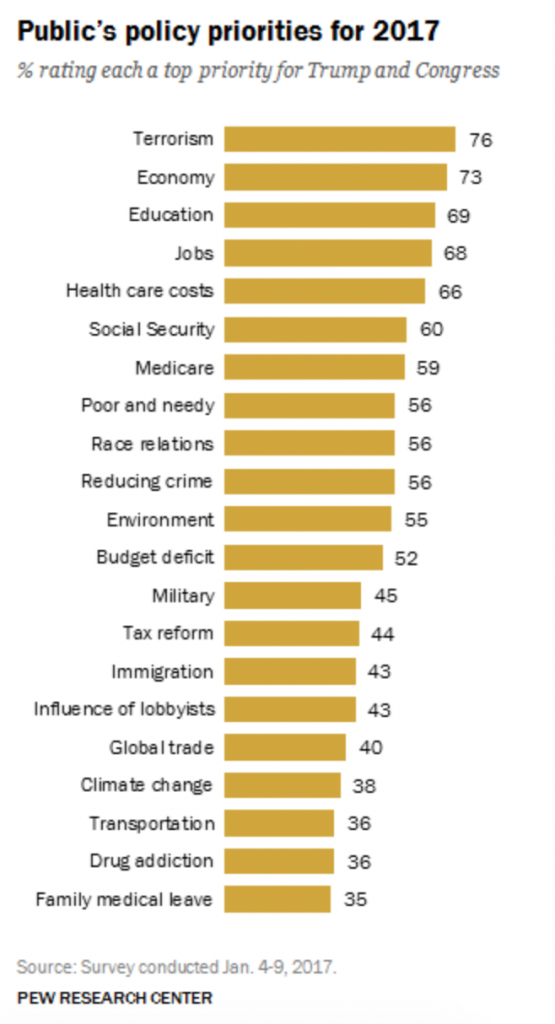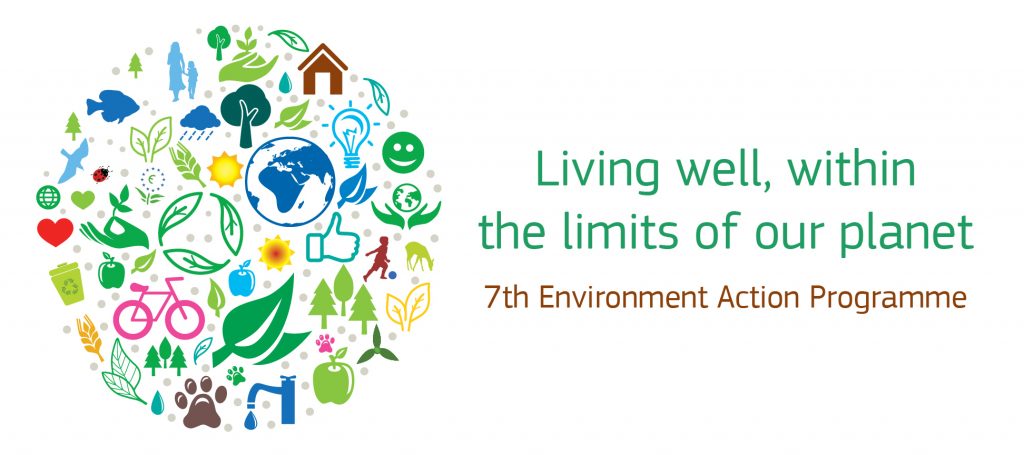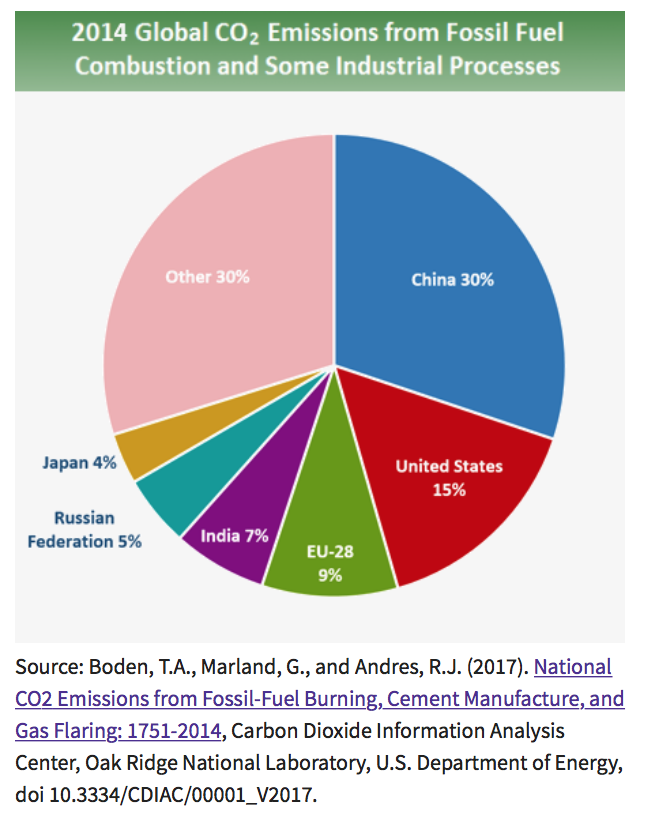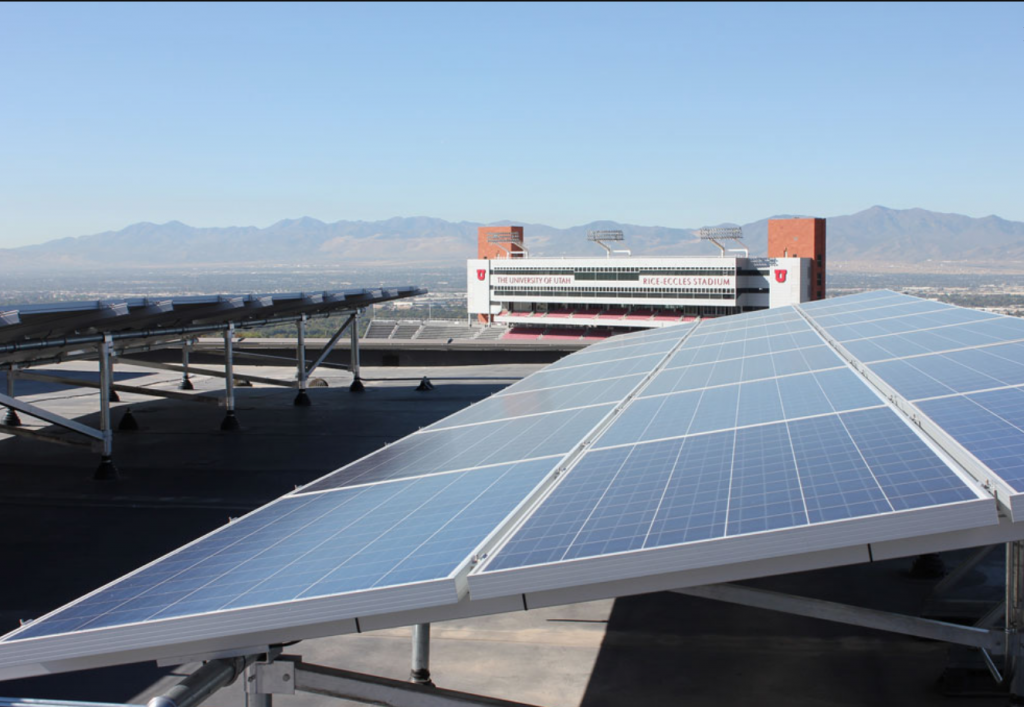Political/Policy Context:
Introduction
The political and policy analysis of our report focuses on the impacts the environmental movement has on global governments and what policies the United States claims to be implementing to aid in reducing the effects of global warming. After looking at the environmental movement on a global scale, our report delves deeper into the environmental movement of the United States by looking at college campuses across the country that act as role models for ideal living communities. The end of this section discusses the decision-makers in charge of implementing these policies and relevant policies undertaken by Lafayette College.
The purpose of this report is to provide insight into the current state of the environmental movement, how the global movement is affecting college campuses, and how Lafayette College is specifically playing a part in making a difference. As discussed in the Introduction and Social Context,we believe that providing visible signs of renewable energy will show prospective students Lafayette’s commitment to exhibiting sustainable practices. It was important to look at the environmental awareness movement from a global and a local perspective because it shows how college campuses respond to global issues.
Globally and nationally, there are many stakeholders involved in implementing beneficial environmental policies. Identifying key stakeholders that are specific to Lafayette is important in order to gain support to implement solar panels on the rooftops of buildings on campus.
Problem Definition
Globally, world leaders are attempting to implement policies to reduce effects of global warming. In the United States, it is evident that environmental policies are not a top priority within the government. As shown in Figure 1, according to survey results taken in early January of 2017, the environment is not even ranked in the top 5 for the American public’s policy priorities. Since President Trump was elected, the public’s national policy priority rankings changed only slightly. Roughly three-quarters say that defending the country from terrorism (76%) and strengthening the economy (73%) should be top priorities for the government, while at least two-thirds prioritize improving the educational system (69%), improving the job situation (68%) and reducing healthcare costs (66%). According to Pew Research Center, “a majority of Americans (55%) now cite protecting the environment as a top priority, up from 47% a year ago” (Pew Research Center, 2017). The United States Environmental Protection Agency’s mission statement explains that their purpose is to “protect human health and the environment.” After identifying environmental problems, the EPA tries to solve these problems by developing and writing regulations to Congress as they strive to set national standards that states and tribes should enforce through their own regulations. For those who do not meet these regulations, the EPA is there to help (US EPA, 2016). However, compared to other countries, the United States is not doing enough. As the third most populous country in the world and a world superpower, the United States should be one of the dominant leaders of the environmental movement.

Figure 1: Pew Research Center’s January 2017 survey for the American public’s national policy priorities for 2017.
European Environmental Initiatives vs United States Environmental Initiatives

Source: http://ec.europa.eu/environment/action-programme/images/7APnewlogo.jpg
In recent years members of the European Union, as a whole, have become progressive with the need to take action. The European Union has implemented environmental policies, specifically the Seventh Environment Action Program, that they are hopeful will bring a change to our warming world.
In 1997, the Treaty of Amsterdam was a catalyst for the European Union’s involvement within environmental policy. In general, the treaty created a qualified majority vote in the European Council with co-decision rights in the European Parliament to make environmental policy decisions. Since the adoption of the treaty, environmental policy created by the European Union has noticeably grown. Today, environmental policies have become one of the most active areas within the European Union policy-making realm. The EU has some of the world’s highest environmental standards (European Union, 2017). Like the United States countries belonging to the European Union are some of the largest energy consumers and greenhouse gas emitters in the world. However, unlike the United States, the EU has reacted to this with an increase in policy revolving around climate change.
Over the past few decades the European Union has been working tirelessly to develop and establish a broad range of environmental legislation. Since 1973, the European Union has created environmental programs, known as Environment Action Programs (EAP). Since the European Union has considered these programs to be successful, they are currently in the midst of the seventh action program. These programs provide “a framework for Union action in the field of the environment” (European Parliament, Council of the European Union, 2013). Established in January of 2014, the Seventh Environment Action Program is guiding the European Union’s environmental policy until 2020. Even beyond 2020, this EAP has created a vision into 2050. The EEA is looking forward to living in a green economy. This green economy has been defined by the EU “as one in which environmental, economic and social policies and innovations enable society to use resources efficiently — enhancing human well-being in an inclusive manner, while maintaining the natural systems that sustain us” (European Environment Agency, 2012).
As evidenced above, it is clear that Europe is making strides toward maintaining a sustainable lifestyle. Europe acts as a great model for the United States to learn from. Currently in the United States, activist groups dominate progressive movements for environmental awareness. In 2014, along with China and the European Union, the United States ranked second in the top 3 biggest contributors to greenhouse gas emissions (See Figure 2). Therefore, it is imperative that the United States becomes a world leader like the EU with implementing effective change toward our warming world. Unfortunately, necessary actions are not taking place within the United States government. For example, President Trump removed the United States from the Paris Climate Accord. The Paris Climate Accord is an agreement within the United Nations Framework Convention on Climate Change that deals with greenhouse gas emissions mitigation, adaptation, and finance starting in the year 2020. Removing the United States from an agreement like this weakens our chances at being frontrunners for saving the world against global warming. Climate change is a long-term challenge that requires sustainable global action. However, with the the United States being such a large contributor of emissions to our dwindling environment, there is increased pressure on voluntary efforts from federal, state, local, and corporate levels.

Figure 2
The United States Environmental Protection Agency claims that they are “taking a number of common-sense steps to address the challenge of climate change” (US EPA, 2016). Their many initiatives involve collecting emissions data, getting reductions, evaluating policy options, costs and benefits, advancing science, and partnering with states, localities, and tribes. Collecting various types of greenhouse gas emissions (GHG) data helps policymakers understand and identify opportunities for proposing regulations to help better reduce emissions and increase efficiency. Examples of reducing GHG emissions and successful partnerships are seen in the Clean Power Plan (CPP). The CPP was established to help address emissions from power plants. According to the EPA, when the Clean Power Plan is fully in place by 2030, carbon pollution from the power sector will be reduced to 32 percent below levels recorded in 2005. Through voluntary energy and climate programs, EPA’s partners reduced over 345 million metric tons of greenhouse gases in 2010 alone (US EPA, 2016). Overall, the EPA is making monumental moves toward leading the United States to become more environmentally aware with numerous actions and legislations explained above and available on their website. However, without federal government support, these initiatives can only go so far.
College Campuses as Model Communities
Although the United States EPA is making strides to preventing climate change, colleges and universities across the nation have become extremely proactive in the environmental movement as well, as shown by the establishment of the American College and University Presidents’ Climate Commitment. The program was created to address climate change, reduce GHG emissions by colleges and universities, drive research, and promote education (Jo, Ilves, Barth, & Leszczynski, 2017). New generations of students understand there is a problem that needs to be solved. As mentioned in the Social Context, competitiveness among colleges and universities places pressures on institutions to make sure that their campuses are exhibiting visible signs of sustainable and environmental initiatives on their campuses. Colleges and universities believe that installing solar photovoltaic systems on their campus will visibly display their institution’s commitment toward sustainability. “From an aesthetic point of view, a solar PV system on campus creates an impression of a forward thinking and green institution for students, faculty and visitors” (Jo et al., 2017). These green campuses serve as examples of model living and learning communities. “University sustainability is moving further into the mainstream every passing year” (Goldfarb, 2016).
Examples of higher education institutions that have taken the necessary steps to transform their campuses include: Northwestern University, Drexel University, University of Arizona, Butte College, University at Buffalo, Colorado State University, Princeton University, University of Tennessee, Knoxville, and Santa Clara University. Many of these programs were faculty/student led-initiatives. Specifically, this report analyzes the efforts made by University of Utah, Endicott College,University of Missouri-Kansas City , and William Paterson University below.
In 2015 the University of Utah not only completed their seventh rooftop solar panel installation on campus, but they were also the first university in the country to sponsor a community solar program that helped 380 homeowners commit to solar installations on their homes. The university teamed up with Utah Clean Energy, a local nonprofit, to provide discounts, credits, and know-how to U of U community members, making the installation of 1,800 kilowatts of solar panels on local residences a reality (Baker, 2016). (Shown in Figure 3)

Figure 3: Two of the solar arrays on the west penthouse of the J. Willard Marriott Library, University of Utah. Source: https://unews.utah.edu/red-goes-for-green-energy/
Other specific examples of a solar implementation on college and university campuses can be seen at Endicott College in Massachusetts. After looking into solar and other types of renewable energy technologies, administrators decided to install a solar canopy over a 255-space parking lot in 2014. Due to the success of the solar canopy, in 2016 the school designed and built a new hockey arena that included solar panels on the rooftop. At the University of Missouri-Kansas City, the institution’s performing arts center had solar panels installed on the rooftop as well. Since the performing arts center was a new building that the school knew could bear the load of holding solar panels, it was also the university’s highest energy using building on campus. Lastly, William Paterson University in New Jersey implemented solar panels on their recreation building due to its higher-energy-use and location next to a parking lot. The solar panels generate significant energy for the building and the parking lot (Helmerm, 2017).
The director of programs for the Association for the Advancement of Sustainability in Higher Education (ASSHE) describes the trend of implementing solar panels on college campuses as “widespread and growing quickly.” The organization is aware of 330 institutions that have deployed more than 600 installations nationwide, with the total solar capacity in higher education at approximately 247,776 kilowatts” (Helmerm, 2017). Aside from making an impact on their own campuses, many of these institutions play a major role in spreading their environmental initiatives to their surrounding communities as well.
Policies:
While in Europe, the EU is heavily influenced by activists; politicians consult with experts and activist groups before making decisions based on subjects they are not specialized in. In the United States, lawmakers are the primary decision makers. However, activist groups and higher educational institutions are able to take matters into their own hands in making the difference they want to see that lawmakers do not provide. Institutions are free to adopt their own sustainable plans for their campuses.
Pennsylvania Policies
After speaking with Lafayette’s Office of Sustainability Energy Manager, Nick DeSalvo, we were informed of Pennsylvania’s low energy costs. Advised by Lafayette’s Director of Sustainability, Marie Fechik-Kirk, we were given possible grant policies that are available to higher educational institutions that would be reasonable for Lafayette College to consider being an institution situated in Pennsylvania. After our discussion with Marie, she believes that if the college is going to install solar panels on campus, grant funding or achieving a Power Purchase Agreement (discussed in greater detail in the Economic Analysis ) would be critical for success.
Two possible grant policies are EBSCO’s Solar Grant and the West Penn Power Sustainable Energy Fund. EBSCO Information Services is an American company that specializes in informations services as it is the leading discovery service provider for libraries worldwide. EBSCO Information Services has renewed its commitment to helping libraries “go green” by bringing back an expanded version of its EBSCO Solar Grant Program for 2017. As part of the EBSCO Solar initiative, EBSCO is currently seeking grant applications to help libraries fund solar installations. EBSCO is making two $100,000 grants available to bidders that will allow the winning libraries to reduce their utilities expenditures and install a solar array at their institution. In 2016, EBSCO awarded its first EBSCO Solar Grant to Austin Community College District’s Highland Campus Library in Austin Texas (EBSCO Industries, Inc., 2017).
Another possible grant could come from the the West Penn Power Sustainable Energy Fund (WPPSEF). The WPPSEF is a nonprofit organization whose mission is to promote the use of renewable and clean energy technologies, energy conservation and energy efficiency technologies, and the education of those technologies that can benefit West Penn Power (WPP) ratepayers. WPPSEF grants are limited to non-profit entities, which works to Lafayette’s benefit. However, obtaining a WPPSEF grant is a very competitive process where applicants must clearly demonstrate that their project will benefit WPP ratepayers (West Penn Power Sustainable Energy Fund, 2017). Therefore, in order for Lafayette to earn a WPPSEF grant, the college would need to provide information proving that there is a substantial amount of students that attend Lafayette from this area of Pennsylvania.
Lafayette’s Current Environmental Commitment
“We are dedicated to creating a sustainable environment that improves the quality of life for all.” – Lafayette College
Lafayette College is the only college/university in the Lehigh Valley to have signed the American College and University Presidents Climate Commitment. As stated previously, the American College and University Presidents Climate Commitment is an initiative aimed at addressing climate change, reducing greenhouses gases from colleges and universities, driving research and promoting education in this field of study. Since signing in 2008, Lafayette has developed a Climate Action Plan for reducing its carbon footprint. The Plant Operations Energy Committee’s main job is to minimize the college’s water and carbon footprint. Recently, the Committee published an Energy Policy that outlines the steps necessary for the College to reach energy saving goals. The Campus Energy Policy states “that all new construction and major renovations will meet Leadership in Energy and Environmental Design (LEED) silver standards for sustainability and green architecture” (Lafayette College Office of Sustainability, 2017a). The Campus Facilities Master Plan addresses numerous sustainability initiatives, such as:
restoring native plants, reducing the amount of turf on campus, eliminating roadways, encouraging walking, biking and mass transportation, a recycling strategy, a dedication to composting, and a guide to organic farming and Good Agricultural Practices at LaFarm. Lafayette’s current dining services provider, Bon Appetit, also provides formal policies that focus on local, sustainable food (Lafayette College, 2009).
The “Greening Lafayette” initiative focuses on raising awareness of sustainability and topics such as food, water, energy and waste. “Greening Lafayette is a module within Lafayette’s Connected Communities Program (CCP), and it aims to bring the community together to engage with environmental issues, through education and action” (Lafayette College Office of Sustainability, 2017c). Comprised of administrators, faculty, and students, the Sustainability Committee is led by Marie Fechik-Kirkt. The Committee meets once a month to discuss campus sustainability initiatives and “facilitate communication and collaboration among groups committed to environmental protection and sustainable growth and development” (Lafayette College Office of Sustainability, 2017d). With Lafayette’s Office of Sustainability, multiple ECOreps and student Green Guides serve as peer environmental educators on campus. In addition to the workings of Lafayette’s Office of Sustainability, there are numerous student organizations committed to sustainability, both on and off-campus. Organizations include: Lafayette Environmental Awareness and Protection (LEAP), Lafayette Food and Farm Cooperative (LAFFCO), Society of Environmental Engineers and Scientists (SEES), Landis Community Outreach Center partnering with the West Ward Neighborhood Partnership Program, Nurture Nature Center and the Easton Farmers Market, and Engineers Without Borders (EWB).
These organizations and committees mentioned above, especially the Office of Sustainability, are key stakeholders in providing information necessary for the College to understand and to be knowledgeable of. After speaking with Professor Mary Wilford-Hunt, Lafayette College’s Director of Facilities Planning and Construction, she informed our group that funding plays a major role in the implementation process as well.
Conclusion
As evidence in this section of the report, there are many elements that are to be considered in order to support the need for visible signs of renewable energy sources on Lafayette College’s campus. On a global scale, the United States can learn from the environmental efforts being undertaken by the European Union. In the meantime, higher educational institutions will continue to be model living and learning communities for their local communities as well as national policymakers. Over the past few years, Lafayette has been making notable strides to creating a sustainable and environmentally aware environment. However, due to the emerging environmental awareness movement, the need for visible signs of renewable energy sources are needed to compete with other institutions across the nation.
Next Section: Technical Analysis
